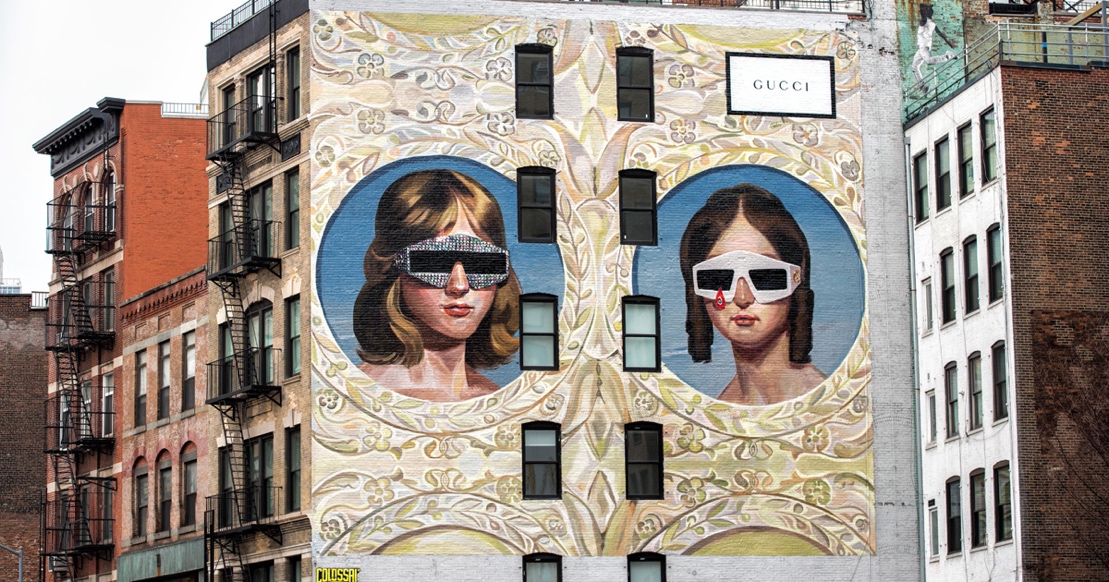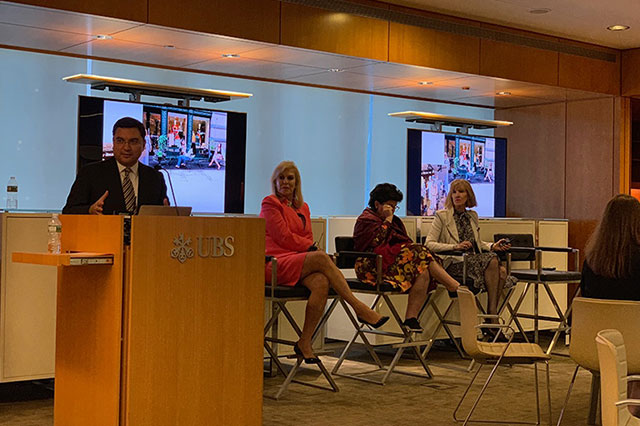Coresight Research attended Luxury Daily’s Luxury Marketing Forum. This all-day event provided insights into marketing strategies and other best practices in today’s world of luxury commerce from luxury marketing specialists as well as consultants. There was a special focus on the power that consumers now possess and how to market to this new demographic.
Speakers at the forum included Mickey Alam Khan, Editor-in-Chief of Luxury Daily; Robert Samuels, Chief Investment Officer of UBS Wealth Management; Martin Shanker, Founder and President of Shanker Inc.; Adelina Wong Ettelson, Global Head of Residences Marketing at Mandarin Oriental; Ken Nish, Chairman of JGA; Preeti Pincha, Senior Manager at Deloitte Consulting; Milton Pedraza, Founder and CEO of Luxury Institute; Morin Oluwole, Head of Luxury at Facebook and Instagram; Sana Carlton, Northeast Group SVP of Kantar Milward Brown; and David Becker, CEO of Attract China.
This report identifies our top four takeaways from the event, specifically:
- the new luxury consumer is self-informed and self-directed, and values personalized experiences;
- the retail and in-store experience of luxury commerce needs to evolve;
- the role of online and tech in the luxury sector is important for improving the omnichannel consumer experience and distribution capabilities; and
- redefining marketing and creating new strategies is critical for luxury companies.
These takeaways are discussed in detail below:
1) The New Luxury Consumer
Keynote speaker Samuels opened the event with comments on one of the important themes of the day, the changing luxury consumer. Today, the retail consumer has access to much more information than ever before and therefore, has much more power.
Shanker stated that “self-informed customers are self-directed.” Technology and access to information has resulted in a shift in the power dynamics of the luxury market. With a steady flow of information about brands, fashion and influencers at their fingertips, the consumer is outpacing the industry’s ability to keep up with his/her desires and expectations. High net-worth luxury shoppers are frequently more informed than the sales staff and can “sniff out BS a mile away” according to Samuels.
Millennials and Gen Zers are the epitome of this new changed consumer and are the luxury consumers of the future. According to Samuels, these demographic cohorts value personalized experiences that are authentic and exclusive; they expect to interact with brands across multiple platforms. Shanker noted that younger consumers demand experiences and the ability to interact directly with a brand—via Snapchat, Instagram and other tech platforms—is very important.
Also, younger consumers value sustainability, where and how a product is made, and how a company treats its employees. Social consciousness is a huge driver of the new luxury consumers’ purchasing decisions.

2) The Retail and In-Store Experience
All panelists stressed a growing need for brands to evolve the in-store experience to match the demands of today’s evolved consumer. About 80% of retail luxury transactions are carried out in brick-and-mortar stores, and only brands that create in-store experiences will be able to increase store traffic and conversion while expanding their customer base and thus enjoy growth.
Hiring talented and trained associates is most important for evolving the in-store experience to satisfy the desires of the new luxury consumer. Retailers need to invest in their frontline employees to win. Shanker queried, “are sales associates obsolete?” He urged sales associates to emulate art dealers and create “an oasis of genuine service and an emotional connection with the client.”
Nisch spoke of co-shopping environments and stores that have succeeded in creating an environment of storytelling and authentic engagement. He mentioned Sundance, a store in Arizona that provides women with a female-oriented environment filled with sustainable and artisanal products that communicate the brand story, as an example of authenticity that resonates with its core customer. Environments that blend shopping, beauty, wellness, food and other lifestyle aspects are best able to attract consumers, he said.
3) Role of Online and Tech for the Luxury Sector
McKinsey has predicted online luxury sales are set to triple in the next few years. Today, e-commerce accounts for around 10% of total retail sales in the US; however, given its double-digit growth rate, penetration will continue to increase in the foreseeable future. This growth in e-commerce holds huge potential for luxury brands that provide an omnichannel consumer experience and have the distribution capabilities to address this opportunity.
Brands, such as Sephora, that have started implementing new digital and tech strategies are already reaping the benefits. Luxury brands are now using Instagram to swipe up, poll, and tell stories; they are directly interacting with and messaging consumers and prospective shoppers.
Samuels suggested that luxury brands should look at consumer packaged goods companies for tech strategies—for example, Tide and Patron, which are using Amazon’s Alexa to provide consumers with tutorials and drive increased engagement. Rayban and NYX are using augmented reality to allow customers to try on glasses and lipstick shades through their smart phones and other devices. Net-a-Porter provides easy cross-shopping by including links to items that pair well with the item in the consumer’s basket.
Becker stressed the importance of luxury brands to become China-friendly with their digital solutions. He noted that 87% of Chinese consumers use mobile payment and seamless paying options, and these shoppers—who account for 30% of global luxury purchases—expect brands to use WeChat Pay and AliPay for easy payment solutions. The entry of luxury brands into Chinese markets, Becker said, can be facilitated by Jeenie, a live bilingual translation app that supports customer engagement efforts on the WeChat and Weibo platforms.
4) Redefining Marketing and New Strategies
Pedraza admitted that there are no standard recipes for success in the luxury market. Copying Gucci’s strategies that resulted in the company’s recent meteoric rise doesn’t guarantee success for other brands. When Gucci CEO Marco Bizzarri chose Alessandro Michele as the brand’s creative director, this success was unforeseen; however, the use of constant feedback for making real-time rapid changes led to Gucci’s malleable strategy and the ability to quickly pivot to what worked. Pedraza advises brands to “operate with agility, experimentation and rapid adaption/feedback.”
Pedraza called for a redefinition of marketing. Today’s table stakes are empowering customers to share their story; focus on multigenerational mindsets; expanded omnichannel capabilities while doubling down on in store experiences; superior digital execution and an articulation of a brand’s social responsibility credentials.
Lessons can be learned from brands that are succeeding. According Carlton and BrandZ, Louis Vuitton’s (LV) brand equity rose 41% to $41 billion in 2018. It is the most valuable luxury brand based on its brand experience, use of data and technology, innovations and heritage. Staying relevant by partnering with artists such as Jeff Koons and maintaining exclusivity by releasing limited availability collections has resulted in LV retaining its top spot.
Chanel has a brand value of $10.4 billion (ranked fourth among global luxury brands), according to BrandZ. Oluwole believes that Chanel is the most influential luxury brand on social media with 40.8 million followers, as the brand combines digital relevancy and inclusivity, without losing its classic elegant identity.
Khan summed up the day by urging luxury marketers to stop focusing on demographics and start focusing on mindsets; employ one-to-one marketing without being disruptive or interruptive; evolve logistics and find new ways to target overly-informed consumers.c


